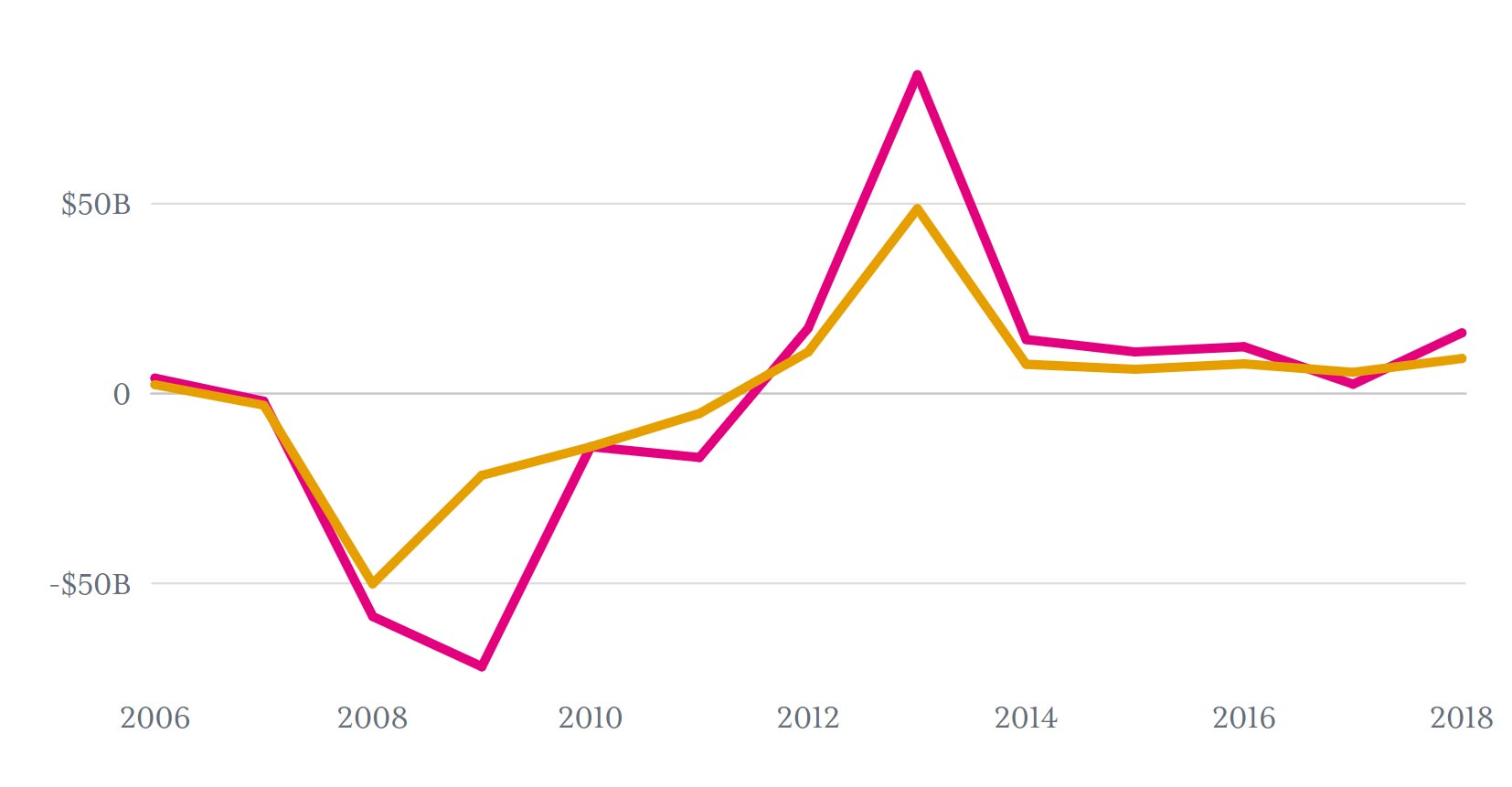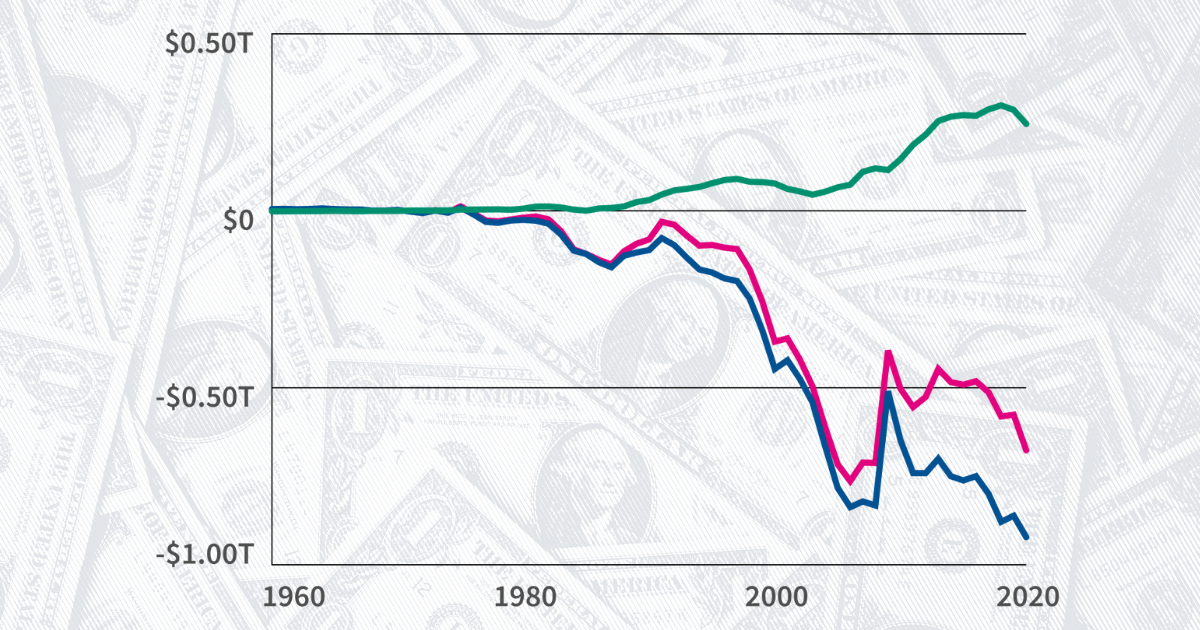Economy
Fannie Mae and Freddie Mac: A look at the two mortgage giants under federal control since 2008

American businesses and individuals filed 383,810 bankruptcies in the 2022 fiscal year. The number of filings had generally risen since 1980, peaking at more than 1.78 million in 2005, but it has more or less fallen since then, other than a brief uptick in the wake of the Great Recession. The number of bankruptcy filings in 2022 was about 12% lower than in 2021.
While high profile bankruptcies such as Bed Bath & Beyond or Toys ‘R’ Us make headlines, business bankruptcies are a small share of overall bankruptcies. In 2022 they were 3.4% of filings, compared to 96.6% filed by non-business entities, including individuals.
When businesses or individuals can’t pay their debts or other obligations, they can turn to US bankruptcy law for relief — the chance for a fresh start after having debts forgiven. In the words of the Supreme Court, bankruptcy offers “a new opportunity in life and a clear field for future effort.”
First, debtors or their lenders file a petition, then a bankruptcy judge determines whether they are eligible for bankruptcy. The judge considers debtors’ assets — anything they own that is not exempt, such as stocks, real estate, or high-value belongings like family heirlooms — which can be used to pay down some of the debt.
Then the judge determines which debts should be discharged — in other words, erased without having to be paid back. Creditors can challenge a discharge to argue that a debt should be repaid, and the court holds a hearing for both sides to present their arguments.
Once the process is finished, businesses and individuals receive a discharge order from the judge and are free of the debts they couldn’t pay. Some debts can’t be discharged, however, including student loans, many tax claims, debts to the government, criminal justice fines and fees, child support and alimony payments, debts owed to a child or ex-spouse, personal injury debts, debts related to tax-advantaged retirement plans or housing fees, or anything the debtor didn’t list in a bankruptcy petition.
There are three main chapters in federal law under which a business or individual can file bankruptcy: Chapter 7, in which assets are liquidated; Chapter 11, in which a company or individual continues operating while reorganizing; and Chapter 13, in which debt repayment is worked out through reduced terms or payment plans.
A bankruptcy remains on someone’s credit report —for Chapter 7 it’s for 10 years, while for Chapter 13 it’s seven—which makes it harder to get a loan or other credit in the future.
There were 229,703 Chapter 7 filings — the most common form of bankruptcy for both businesses and individuals— in 2022. Under this chapter, a debtor’s nonexempt assets are sold by the court or a trustee assigned to the case and the cash proceeds are distributed to creditors—the entities that lent the debt in the first place—to repay them.
This chapter allows debtors to erase unsecured debts, such as medical bills or credit card debts. If someone doesn’t have any nonexempt property and only owns items such as clothing, household goods, or cars under a certain value, they may not have to repay any of the debt.
There were 149,077 Chapter 13 filings in 2022. This chapter applies to people with steady incomes who make too much money to file for Chapter 7, and it allows individuals to keep their property while coming up with a plan to repay their debts over time, usually three to five years.
It also applies to businesses with consistent income that don’t qualify for Chapter 7 relief. Businesses must complete payments to receive a discharge order.
There were 4,762 Chapter 11 filings in 2022. This chapter is most commonly used by businesses and allows them to reorganize to keep operating without interruption while paying back creditors over time and/or discharging debts.
Under this chapter, businesses seek ways to return to profitability, such as cutting costs, canceling costly contracts, or finding new revenue sources. A court must approve of the business’s reorganization plan.
There are several other chapters, all used far less frequently than the main three. Chapter 12 applies to family farmers or fishermen and lets them work out payment plans while operating their businesses. There were 182 Chapter 12 bankruptcies in 2022.
There were 85 Chapter 15 bankruptcies that dealt with foreign entities, and only one Chapter 9 bankruptcy, which is used by financially distressed municipalities, such as cities or towns. The city of Detroit, for example, went through a high-profile bankruptcy in 2013.
Get more economic updates and bankruptcy data from USAFacts, and get the latest data by signing up for our newsletter.
Economy
Economy
Economy
Economy
Newsletter
Keep up with the latest data and most popular content.


